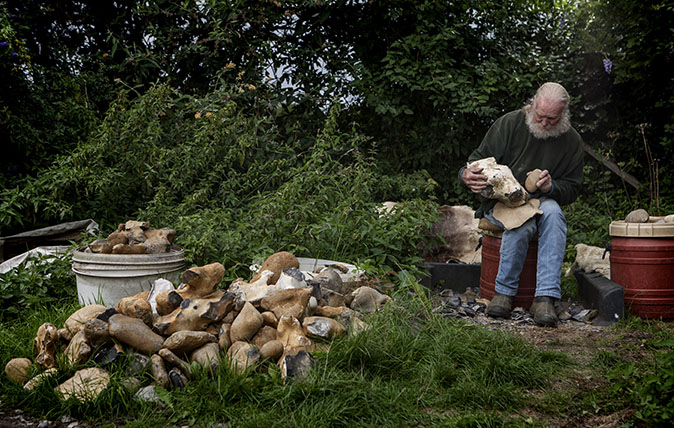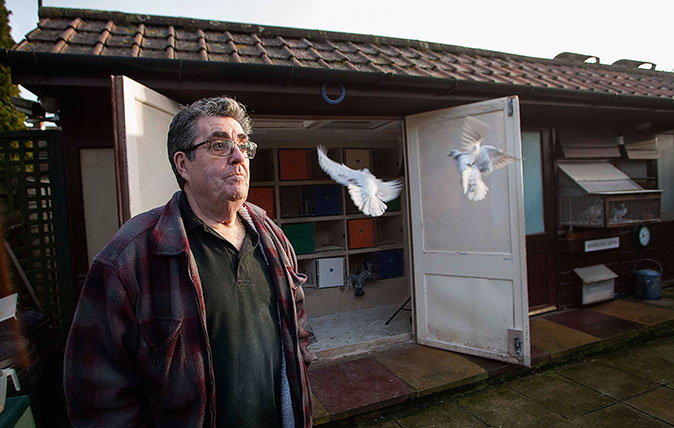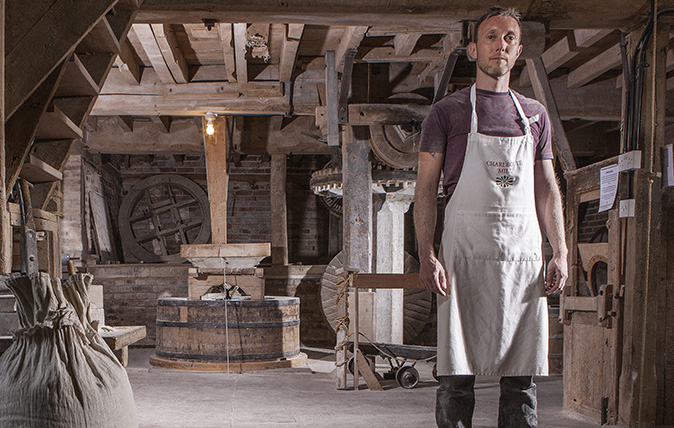The flint knapper: ‘They used to make prisoners do it, but I do it for fun and manage to make a living'
John Lord is one of very few people in Britain who makes a full-time living out of only one stone, in addition to aiding universities and museums with lithic work.

There’s something very therapeutic about breaking up rocks,’ muses flint knapper John Lord, who was recently awarded the British Empire Medal for services to the flint industry. ‘They used to make prisoners do it, but I do it for fun and manage to make a living.’

Mr Lord began his studies into Stone Age technology at Grime’s Graves, a huge Neolithic flint mine in Thetford, Norfolk. ‘I was there for 13 years, so I got tool-making under my belt,’ he explains.
One of very few people in Britain who’s achieved a full-time living out of only one stone, in the form of flint, he left Grime’s Graves to produce architectural flints for the building industry. However, the craftsman has always combined flintknapping with lithic work, the analysis of stone tools and chipped stone artefacts for universities and museums.

‘Flint is a cosmetic cladding and an architectural feature of a large swathe of eastern England. Draw a diagonal line from Flamborough Head in East Yorkshire to Dorset and everything south-east of that is flint country,’ he elaborates.
‘I specialise in breaking them, so that the inside surface shows.’
Mr Lord has been involved in many prestigious projects over the years, such as Flint House, commissioned by Baron Rothschild for his Buckinghamshire estate, which won the RIBA House of the Year award in 2015, but there’s nothing sophisticated about his tools.

‘I use old hammers, like ones you would find in granddad’s shed,’ he admits. ‘They knew how to make hammers then and they have the right temper so that, when you hit things, nothing comes off. It takes years of practice to learn the skill, but, after that, it becomes quite easy.’
Exquisite houses, the beauty of Nature, and how to get the most from your life, straight to your inbox.
To find out more about flint knapping, visit www.flintknapping.co.uk. To find out more about the Heritage Crafts Association which safeguards crafts like flint knapping for the future, visit www.heritagecrafts.org.uk.

Credit: ©Richard Cannon/Country Life Picture Library
The Pigeon Fancier: 'I set up a deckchair in the garden and wait for them to come back. That’s the most exciting part.'
This week’s Living National Treasure is Colin Hill, a pigeon fancier whose birds regularly race from the tip of Scotland

The neon sign maker: 'Piccadilly Circus was our answer to Vegas – now it's all pixellated screens'
This week's Living National Treasure is Marcus Bracey, the man behind the neon signs that light up our cities. He

Credit: Living National Treasure: The Glassblower - ©Country Life/Richard Cannon
The Glassblower: 'When something goes wrong you can't fix it – you just sling in into the bosh bucket and start again'
Ian Shearman's team of glassblowers are still making glass using a technique that's 2,000 years old. Mary Miers found out

The stone conservationist: 'You can’t beat good old-fashioned hand tools that differ little today from those used centuries ago'

The Miller: 'A Victorian miller could walk in and know exactly what to do'
Not many people in Britain can say that their workplace operates exactly as it did 200 years ago. Karl Grevatt